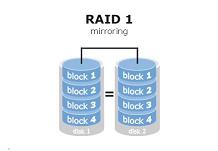|
Raid and Gaming Performance
 |
Gaming Performance :
Our Gaming performance results are based upon testing in the following games:
Crysis
Team Fortress 2
Fear X2
Enemy Territory Quake Wars
We selected these games due to their recent release, large nature of the maps and textures in game, as well as the relatively heavy graphical nature of the games. We measured in game frames per second with Fraps as well as load times under a single drive non-raid (1), two drive(2) , and four drive (4) raid configuration. We did not test beyond 4 drives for gaming as we feel that gamers are unlikly to purchase more than 4 drives for a Raid configuration.
While the RocketRaid 3520 is an 8 port card with 256MB of DDR2 memory, HighPoint does have the RocketRaid 3510 card available which is a 4 port card at a lower price point. There is no difference between the 3520 and the 3510 other than the number of ports on the card. We would suggest the 3510 for all consumers interested in configuring a 4 drive raid array for their gaming needs.
We configured the single, dual, and four drive array using windows default segment size of 512b.
Each configuration was loaded on fresh drives, no image was used, and in each case the array was also the boot partition.
Crysis: Level - Core
Single Drive |
Raid 0 - 2 Drives (1TB Array) |
Raid 0 - 4 Drives (2TB Array) |
|
| Level Load Time | 31 Seconds |
24 Seconds |
21 Seconds |
Single Drive |
Raid 0 - 2 Drives (1TB Array) |
Raid 0 - 4 Drives (2TB Array) |
|
| Game Load Time | 15 Seconds |
10 Seconds |
7 Seconds |
Team Fortress 2
Single Drive |
Raid 0 - 2 Drives (1TB Array) |
Raid 0 - 4 Drives (2TB Array) |
|
| Level Load Time | 22 Seconds |
18 Seconds |
15 Seconds |
Single Drive |
Raid 0 - 2 Drives (1TB Array) |
Raid 0 - 4 Drives (2TB Array) |
|
| Game Load Time | 12 Seconds |
7 Seconds |
4 Seconds |
Fear X2
Single Drive |
Raid 0 - 2 Drives (1TB Array) |
Raid 0 - 4 Drives (2TB Array) |
|
| Level Load Time | 24 Seconds |
20 Seconds |
17 Seconds |
Single Drive |
Raid 0 - 2 Drives (1TB Array) |
Raid 0 - 4 Drives (2TB Array) |
|
| Game Load Time | 10 Seconds |
8 Seconds |
7 Seconds |
Enemy Territory Quake Wars - Africa
Single Drive |
Raid 0 - 2 Drives (1TB Array) |
Raid 0 - 4 Drives (2TB Array) |
|
| Level Load Time | 27 Seconds |
21 Seconds |
18 Seconds |
Single Drive |
Raid 0 - 2 Drives (1TB Array) |
Raid 0 - 4 Drives (2TB Array) |
|
| Game Load Time | 9 Seconds |
6 Seconds |
4 Seconds |
In none of the configurations was there an increase in FPS due to the introduction of a Raid array. FPS remained consistently within1-4% between all configurations.We did not see an increase or benefit of Raid to frames per second.
As you can see there is anywhere between 10 seconds and 7 seconds difference loading time between a Raid 0 and single drive configuration. What cannot be measured but was experienced was a big reduction in in game lag due to hard drive access. Any occasional stutters were momentary pauses as opposed to elongated stutters which can be experienced with single drive configurations.
Overall gameplay comes down to your video card and CPU more than it does the hard drive. While game load times show here are for games with huge maps and a lot of textures your average games should load faster and you will be waiting less and playing more with a raid configuration. You may want to weigh this against the cost of a 2 to 4 drive configuration plus the raid controller card. We cannot stress enough the large difference between onboard and stand along raid controllers CPU consumption and would suggest a stand alone card for your best performance. See our initial assessment of the HighPoint RocketRaid 3520 here.




